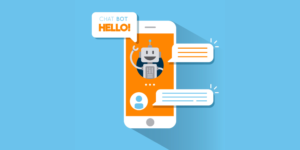Almost by definition, the Internet of Things (IoT) is thought of as being nearly omnipresent. We envision expansive networks of devices communicating ceaselessly with one another, all around us. And really, that’s more or less the reality. Even so, the IoT has virtually limitless potential to grow and expand further, and there are a few reasons to believe it’s only just getting started.
The Smart City Concept
While smart homes soaked up a lot of the attention in the earlier days of the IoT, we’ve recently been seeing more discussion about the potential for smart cities. The idea came up in our post ‘Smart Town Investment Paving Birth for the Next Gen Inspiration for IoT’ in which we commented on Dubai’s potential evolution into a smart city. And around the world, there are cities slowly adapting to become more intelligent — whether through automated traffic management, smart waste management systems, or any number of other things. This development points to a sort of next-gen IoT expansion because it requires immensely.
Cities today are looking into all kinds of intelligent innovations. Some are equipping sidewalk lights to dim or shut off when pedestrians aren’t present, to save energy; some are putting sensors in roads to measure traffic patterns and communicate to traffic lights; various technologies are being used to gather data that can drive improvements in city design. All of these efforts and more will require significant increases in IoT device quality and quantity over many years.
Emerging Tech for Design
As demand for IoT devices grows, we see the emergence of more capable technologies for the actual design of the devices. Beginning with the internal mechanisms, some critical modern changes in printed circuit board design will ultimately help to expand the IoT. For one thing, PCBs are being made with a growing range of materials that can hold up to harsh, outdoor conditions, or which can be bent and molded to fit into minuscule sensors. Additionally, today’s design programs are built for collaboration: Altium’s overview of sharing electronic design makes it clear that teams can now enjoy comprehensive views of designs, so much so that they can edit and discuss changes together. This will only help to further innovation and produce more capable electronics for IoT devices.
Beyond the electronics, IoT expansion will also depend on related companies’ ability to test and mass-produce new devices. A sensor in the road will not be the same product as one on a traffic light, and so on. And while we have that sort of mass production capability already, there are additional technologies that are already making it easier for us to quickly design new products to meet the IoT’s ever-expanding needs. Most significant may be 3D printing, which is sometimes thought of as of the IoT. A Forbes write-up on 3D printing emphasized as much, suggesting that IoT data collection can help to improve 3D printing performance. That may well be the case, but the benefits go both ways; 3D printing is also an unusually helpful technology in rapid prototyping for new products. Thus, it can and will be used to craft prototypes and original new products, which can then be mass-produced and worked into IoT networks.
The Robot Revolution
“Robot revolution” may sound like a science-fiction title, but the simple fact is that robotics is going to play an increasingly important role in everyday life. While we’ve indeed started to see more automated systems and robotics creeping into various businesses, we’re likely only witnessing the beginning. Digital Trends forecasted 75 million jobs that will be “stolen” by robots by 2025, with the primary targets being “work tasks.”
The good news is that as the article reminds us, this is no reason to panic; robots will create as many jobs as they displace. However, for us to truly benefit from robotic systems, they will need to communicate with one another and generate data. Everything comes down to the IoT, which will expand through and around robotics.
All the developments mentioned above are just a few reasons why it seems very much like the IoT is only just getting started.




















